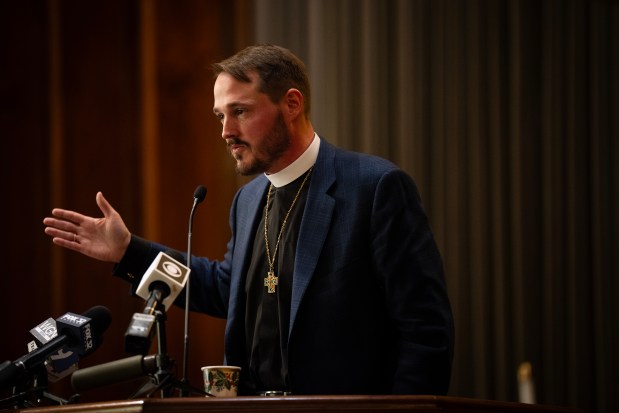NADI, Fiji Islands — “That’s Tom Hanks’ island, in ‘Cast Away’ the movie,” said the passenger sitting nearby, on the rear deck.
We’d seen him standing in line, a college kid in a red shirt, packing and repacking a knapsack while we waited to board the early morning ferry out of Viti Levu, the largest of Fiji’s 330 islands. Leaning over the railing, he pointed at the horizon and a faint gray-green shape.
“Its real name is Modriki, and it’s small, just 100 acres,” he said. “But the beach is awesome. Tourists can’t wait to go.”
No surprise there. For most South Pacific travelers, nothing rivals Fiji’s sandy beaches, palm-shaded gardens, starry nights and Melanesian hospitality. We’d island-hopped over the years, tried a dozen different beach resorts, and liked most of them. Until 2019, when we joined a hiking group for a long look at the island’s mountains.
Finally last fall, with COVID-19 in decline and Fiji open for tourists, we hopped a plane and headed back, this time for another look at what makes the country tick. Finding hotels wasn’t easy; Fiji is to Australians what Hawaii is to Americans. But we crossed our fingers, found five with rooms and struck gold at three places begging for a repeat visit.
The Fiji Orchid, a stately manor house near Viti Levu’s northwest shore and the former home of Hollywood actor Raymond Burr, star of the detective series “Perry Mason,” felt nothing like a hotel and everything like a home away from home. With an inviting living room and framed memorabilia, it beckoned at the end of a very long day.
Hotel Manager Deepika Dimlesh arranged an authentic Fijian dinner, and co-owner Gordon Leewie told tales of Fiji life in the early days. Though Nadi (NAN-dee) International Airport was 20 minutes away, our bure (BOO-ray, room, house), one of six in the lush tropical garden, was as quiet as a cemetery.
“We’ve had guests who stayed for weeks,” said Dimlesh at dinner. “One was even writing a book. But most are international travelers, businessmen flying through. We tell them, if you have a layover don’t try to sleep in the lounge. We’ll pick you up, you can use the pool, eat dinner or go to bed, and we’ll drive you back.”
Curious about Lautoka, Viti Levu’s second-largest town on the northwest shore, we hired tour guide and driver Kesho Goundar, who (like many Fijians) speaks Fijian, English and Hindi. Stopping at the town’s huge covered market, he bought a couple of kava “sticks,” the gifts we would need — for the chief — if we visited a village.
Then it was on to the Sabeto Mountains and the Garden of the Sleeping Giant. A popular park, it was founded by Burr, a worldwide orchid collector. Hundreds of orchids, planted along the trail to the summit, a huge head-like rock, are the highlight of a visit. And the adjacent forest — a tower of vines, shadowy branches and strange flowers — was a set waiting for a movie.
The next day we headed upcountry to Navala Village, the country’s last thatched village, driving past barnyards, gardens, sugar cane fields, villages, the occasional manufacturing plant and Methodist, Muslim, Sikh, Hindu and Catholic-oriented primary schools.
At first glance Navala looked empty, until guide Mark Navaroka came out to collect our $25 entrance fee and a kava stick for the chief.
“This is how we used to build houses,” he said, leading us inside the chief’s official structure, where a couple of village leaders sat cross-legged, talking.
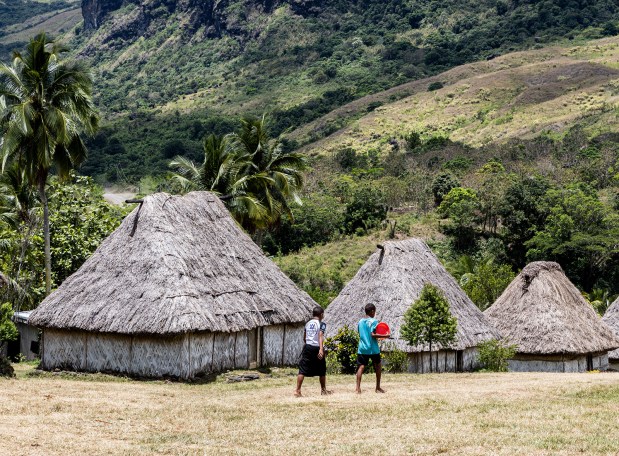
“They built it in 1954 when five dying Catholic villages joined together,” he continued, leading the way to the school and church.
Turning onto the Nausori Highland Road – not another car in sight – we lurched uphill over a rocky, pot-holed track for more than an hour, each hill steeper than the one before, until we rounded the top, a photographer’s delight. Finally, around the corner, we passed two hunters on horseback with rifles and dogs.
Moving to Viti Levu’s southwest corner, we checked into the Intercontinental Fiji Golf Resort & Spa, a 35-acre landscaped property on Natadola Bay. And instead of salesmen in suits, the hotel was as busy as a country club on a holiday weekend. Dads and kids played volleyball; moms worked out at a fitness center. We spotted kids racing hermit crabs, and others learning Fijian words and Polynesian dances. Menus at the hotel’s several restaurants listed continental and some Fijian dishes, and our favorite, the lively Toba Bar & Grill, took our order in five minutes and served the food in 10.
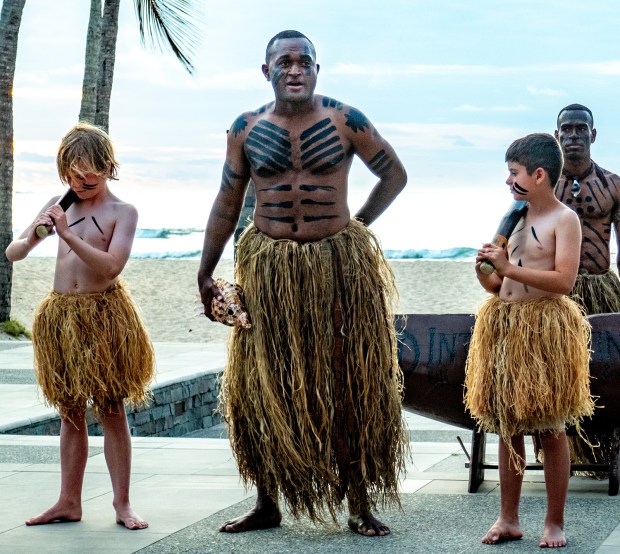
Coaxed into trying the Jet Ski “experience,” we flew over the waves, riding tandem behind two watersports guides. But the skis were trumped by the hotel’s Coral Planting project, headed by marine scientists Lawaci Koroyawa and Luke Romatanababa. Joining them in the water, we learned how to plant healthy corals onto damaged reefs.
Most memorable was the river cruise with Singatoka River Safari. Wide and long, the river winds through an endless valley, weaving past rocky hills, farms and meadows. Children splashed in it and men scrubbed their horses, waving as we passed. Pastoral and peaceful, it was a nod to an older century.
The 35-mile-long trip ended at a village, with a tour, lunch at the community center and a kava ceremony — shared cups – with the chief and town fathers. Kava is calming, some say. Just more weak tea, say others.
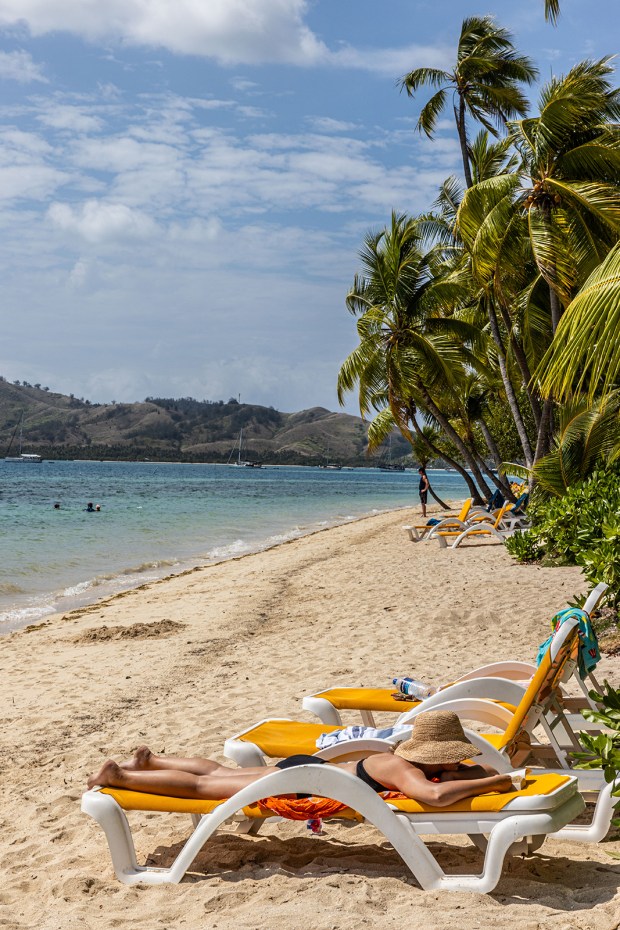
How many villages are there, we wondered. “Hundreds, but that’s not all,” said the hotel’s desk clerk. Each indigenous Fijian family belongs to a village that owns the land it’s on. It’s like a clan, she explained. And only indigenous Fijians can own land. So add all the villages own their land and it’s nearly 90% of the country. “The government makes Fiji’s laws, but the villages rule themselves. That’s why they’re important.”
As our last week approached, we took the ferry to Lomani Island Resort — yes, an adults-only beach resort — on Malolo Lailai island, a single hour’s ferry ride to the mainland and Nadi International Airport. You can stay overnight and still make it to the airport on time.
But it wasn’t the beach that earned the gold star. It was the charming cottages, each with a private yard and plunge pool. The smiling waiters and creative, chef-designed meals, served at candle-lit tables. The “double-X” swimming pool and the water sports center.
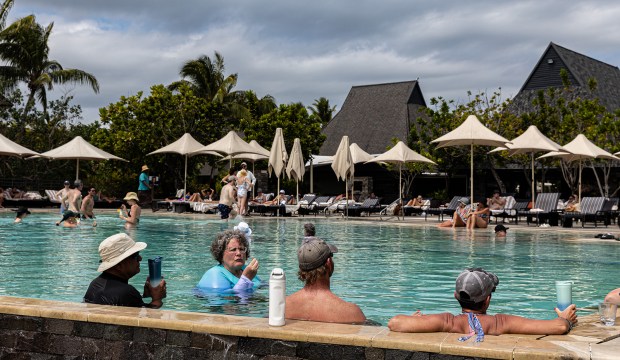
“It’s peaceful here,” said Shelley White, the general manager, when we met at the cocktail hour. “And quiet. But with Nadi next door, we stay busy with weddings and anniversaries, and lately, even business retreats. We can order everything we need and get it delivered the next day,” she said.
“Still, we love to have visitors like you, people who know this place and like it,” she added, with a puckish smile. “Let me know the next time you travel. I might decide to come along.”




